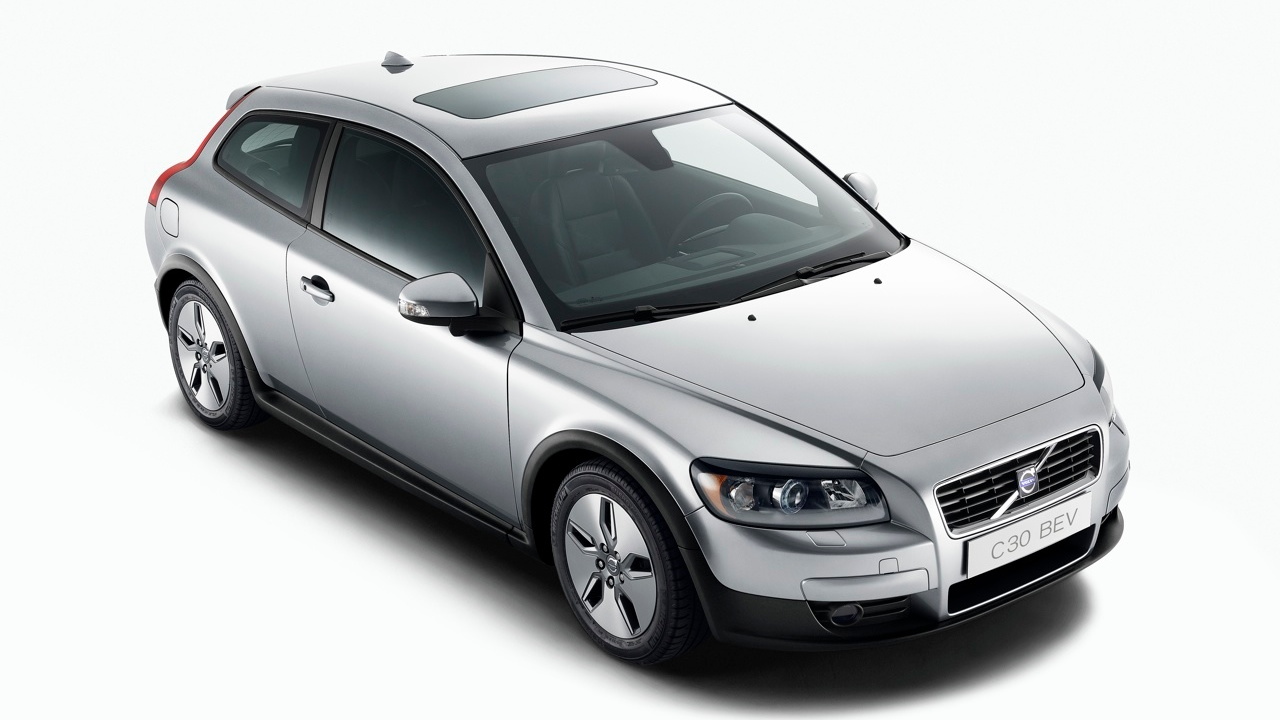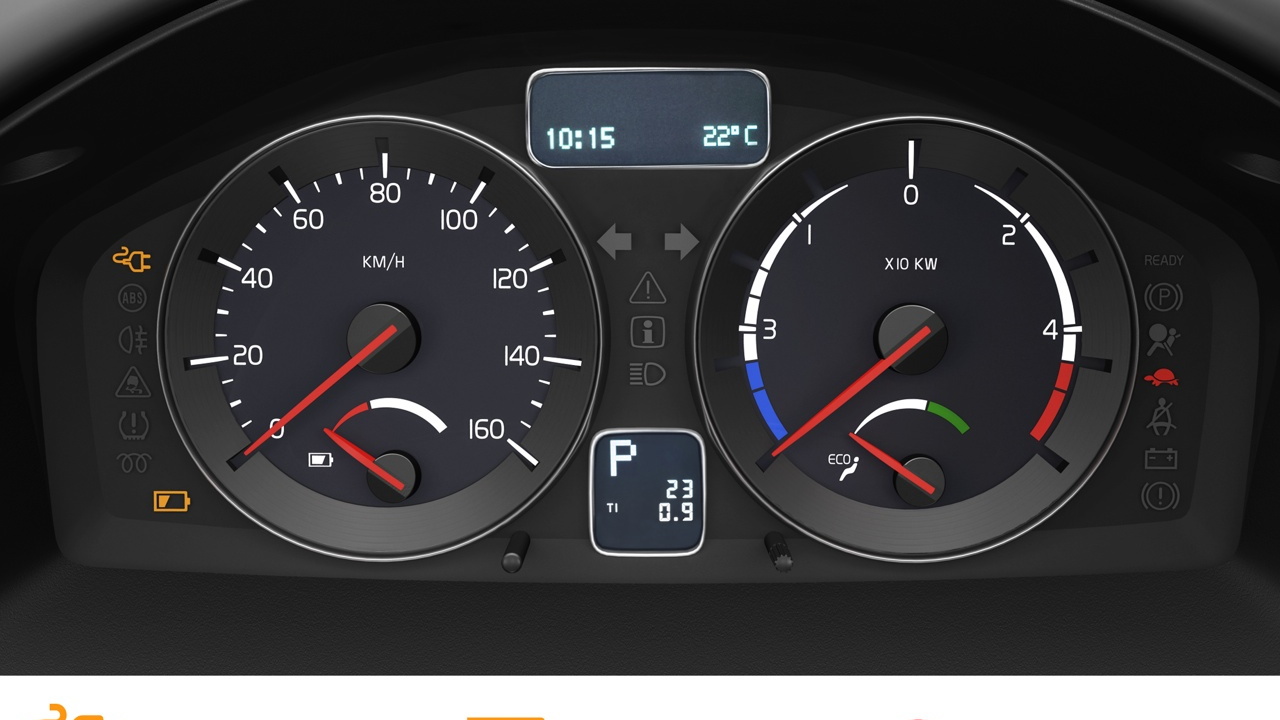Internal-combustion engines typically convert only one-third of the energy stored in gasoline or diesel fuel into usable power. The rest is wasted as heat, noise, or even goes unburnt.
So the question for designers of range-extended electric vehicles becomes: How can onboard liquid fuel most efficiently be used to provide power to electric drive motors once the battery pack is depleted?
Turn gasoline into hydrogen
Volvo's answer is research into onboard reformers that turn gasoline into hydrogen, which would power a fuel cell to generate that electricity at much higher overall efficiency.

Gas pump
This gets around what has become the major stumbling block to production of hydrogen fuel-cell vehicles: An entirely new refueling infrastructure would have to be built, nationally or even globally, with--at minimum--tens of thousands of new filling stations to allow drivers to travel continuously throughout the U.S.
Instead, drivers of the Volvo concept could fill up the gasoline tank as they would in a normal car. It's just that the gasoline's complex carbon molecules are disassembled quite differently than if they were vaporized with air and then exploded. The hydrogen is an intermediate part of a more efficient process.
Volvo says that deriving hydrogen from gasoline can be up to 85 percent efficient, roughly three times as good as using the same amount of energy in an internal combustion engine--even including those that power generators, as in the 2011 Chevrolet Volt, which uses a 1.4-liter engine to run a 55-kilowatt generator to power its drive motor.
Reformer + fuel cell
Backed by research support from the Swedish Energy Agency, as well as the company Powercell Sweden AB, Volvo is developing a fuel cell that can extend an electric vehicle’s operating range with vastly lower carbon dioxide emissions.
The aim is to have two working prototypes based on the Volvo C30 DRIVe electric vehicle ready for testing in everyday traffic in 2012. It would add the fuel-cell range extender to what is still predominantly an electric vehicle.
Initially, the project will look into reformer technology and how it can work efficiently in a range-extended electric vehicle. The task of the reformer is to break down a liquid fuel, in this case gasoline, and create hydrogen gas.
From gasoline, air, and water to hydrogen and CO2
In essence, a portion of the energy in the gasoline is used to break down the rest of the gasoline into components by adding air and water. Through a series of chemical reactions, the hydrogen is segregated and used to power a fuel cell that generates electricity to drive the car.
Three processes take place, with two transformations happening simultaneously. A small portion of the gasoline (CxHy) in the reformer is partially oxidized using the oxygen (O2) from air, which gives off copious amounts of heat energy. The outputs are hydrogen (H2), carbon monoxide (CO), and the remainder of the fuel:
CxHy + O2 --> H2 + CO + (CO2)
That heat, in turn, is used to turn water (H2O) into steam, which reacts with the remaining fuel to produce large volumes of hydrogen, along with some carbon dioxide (CO2). and more carbon monoxide:
CxHy + H2O --> H2 + CO + CO2
The final step is to add more water to the carbon monoxide, producing still more hydrogen and carbon dioxide:
CO + H2O --> CO2 + H2
The hydrogen then powers the fuel cell, which produces electricity from the electrons given off when the hydrogen combines with oxygen to produce water vapor and energy. Fuel cell efficiencies are typically 50 to 60 percent.

Volvo C30 Battery Electric Vehicle, shown at 2010 Detroit Auto Show
Volvo's goal for overall "tank to wheels" efficiency is 37.5 to 40 percent, or higher than even the most efficient diesel engine today.
No criteria emissions
From the beginning to the end of the cycle, electricity is produced with no emissions of traditional gasoline engine pollutants, known as "criteria emissions": carbon monoxide (CO), nitrogen oxides (NOx), sulfur oxides (SOx)--which are captured in a sulfur trap, or particulate matter.
The end products are simply electricity, and a small amount of carbon dioxide (CO2). And the CO2 emissions are significantly reduced versus using the same amount of gasoline to produce torque to power the car.
Volvo predicts that the driving range of its C30 electric car could increase to 155 miles using a combination of a battery and the fuel cell. And it can be adapted to use a variety of liquid fuels, including ethanol, diesel, or even synthetic diesel.
[Volvo]
















